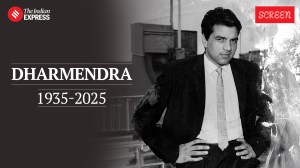A Magazine for All of Us
A young man called William Roy DeWitt Wallace,recuperating from a shrapnel wound in France after World War I,found himself reflecting on the media-saturated times he lived in.
A young man called William Roy DeWitt Wallace,recuperating from a shrapnel wound in France after World War I,found himself reflecting on the media-saturated times he lived in. Harried readers found themselves so carried along by a tide of information that they could not distinguish between what was meaningless and those facts that could be fitted into a larger pattern.
A few years later in 1922,along with his wife Lila,he devised what we call an aggregator,condensing noteworthy pieces from other magazines for easy reading. It was called,simply,Readers Digest. It aimed to be something between a newspaper and a book,a pocket university. And for the good part of the 20th century,it was the worlds most read international magazine.
Last week,its parent company in the US,RDA Holding Co,filed for bankruptcy for the second time in four years. Amid the recent battering of the magazine world,it isnt surprising that Readers Digest is struggling to survive. This decline cant be blamed on the Internet alone once dubbed the biggest publishing success since the Bible,the Digest has been freefalling for the last couple of decades.
But as someone who spent most of a childhood vacation in a loft at my grandparents home,lounging on a dusty mattress and reading decades-old issues of Readers Digest,I do feel a twinge at the prospect of its passing. Long familiarity,if not affection for the magazine,should prompt us to remember its glory years,when Pleasantville,New York was about as desirable a workplace as Mountain View,California today.
It was a time when mass media as we know it was taking firm shape. Newsweeklies,radio,womens magazines,tabloids,crime fiction,celebrity culture,television,were all taking baby steps through those decades. Readers Digest filled a clear need in an America where culture was being cut down to size. Amid major economic and social changes,a growing class of Americans wanted to present themselves as educated,sophisticated and able to articulate aesthetic preferences.
And so,a new set of intermediaries arose,to select prestigious cultural works,and make them available to the common reader. Intellectuals despised this blend of culture and commerce the middlebrow impulse that audaciously took the best of high culture and made it easier to consume. Cultural scholar Janice Radway has described the warm-blooded,embodied sentimentalism and individualism of middlebrow culture. Sniffy elites may debate whether Reader’s Digest has any brow at all,but for many,it is a point of entry into a richer mental and imaginative world. The series of condensed books that the Digest put out,features like Quotable Quotes,Points to Ponder and Improve Your Word Power,are all vestiges of that levelling impulse.
Self-improvement was the key,in Wallaces view. He wanted articles of lasting interest that will appeal to a large audience,articles that come within the range of interests,experience and conversation of the average person.
And in an era of intellectually elevated,self-important Little Magazines,Readers Digest was just plain product. It assembled the optimal mix of current affairs and human interest content. Wallace believed that everyone else had ideology,while his magazine just had blunt good sense.
That was just a self-serving delusion,of course. Readers Digest was a tentacle of American propaganda in the Cold War years. Its first foreign edition in Latin America,in 1938,was supported by the Roosevelt administration. It ventured into Italian territory as a direct response to the victory of the Popular Front. And over the decades,its undeclared mission was showing up Soviet servitude and contrasting it with a shampoo commercial view of American values. Its stories of perseverance and danger,the little guy triumphing over vast impersonal forces,and easy uplift made it a disarming package.
If you read it with a cold eye,the agenda was hard to miss. It inserted a flag into 18 million copies of its February 1969 edition (exhorting readers to Fly This Flag Proudly). It ran regular features on the bloat of the bureaucracy and twistedness of the legal system (Thats Outrageous and Mugged by the Law). From telling the black underclass to start expecting less from the government and purging pinko incursions of every kind,it coasted on its conservative base for years.
All that said,those days when Readers Digest riveted my attention,the messaging was lost on me. It was just an entry into a long-ago time,with ads for Cuticura talcum powder and Binaca toothpaste,amid all the Drama in Real Life and Points to Ponder.
And if this wave of bad luck swamps the magazine,we should feel some regret for this communication colossus of the 20th century,but remember it had a good life. At a time when our newspapers and magazines are forced to erect walls or whisper to the likeminded,Readers Digest believed in its own big mission,and confidently addressed the world.





- 01
- 02
- 03
- 04
- 05


























